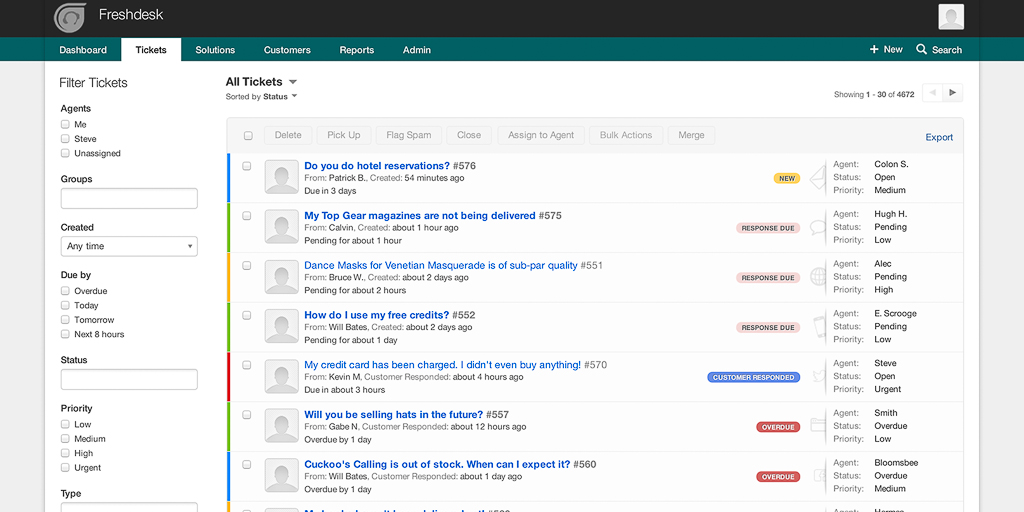Most of us have contacted the customer service unit of a company to get some issue or problem resolved. Help desk software, as the name suggests, allows companies to make the best use of technology to provide prompt and reliable service to their customers. In this article, we look at the history of help desk services and help desk software solutions, the current state of the help desk software market, and also provide some predictions on the ways this type of software is most likely to evolve in the future.
The Early Days of Help Desk
Before the 20th century, businesses mostly relied on face-to-face interaction to resolve customer issues. This meant that the customer had to visit a company’s store or office with the product to get their problem solved.
The invention of the telephone in 1876, and the telephone switchboard in the 1890s, enabled customers to call the company about their problem.
In the 20th century, companies started making use of equipment like dictation machines, typewriters, and dumb terminals with access to a mainframe computer, to address customer issues.
In the 1960s, companies started to set up call centers and trained staff to receive and handle customer enquiries in an organized and efficient manner. The advent of Interactive Voice Response (IVR) was a big boost to telephone customer service which helped customers to do basic transactions without even talking to an agent.

The advent of Interactive Voice Response (IVR) was a big boost to telephone customer service.
The Internet Era
In the 1980s, companies started to outsource their customer service department. The 1990s saw the advent of the internet, email, and live chat. This development enabled US companies to outsource their help desk to low-cost countries like India and the Philippines. The improvement in technology and infrastructure and the presence of an educated workforce in these countries who could articulately speak with international customers over the phone were the main reasons for the boom in the Business Process Outsourcing (BPO) industry starting the late 1990s.

In 1990s US companies started to outsource their help desk to low-cost countries like India and the Philippines
In the 2000s, companies started to use help desk software widely. This decade witnessed the growing popularity of social media channels like Facebook and Twitter. Customers started using these channels to give feedback on services and products, and the customer service agents of companies respond to their queries and concerns. Recently, companies started using remote desktop software to access customers’ computers to find out details about the issue before suggesting a correct resolution.
Developments in Help Desk Software
The earliest use of computers for customer service was done by using mainframe software. Customers would submit paper forms or communicate their issue by phone to customer service agents who would type the details into a dumb terminal. The technical staff would then provide a resolution and the agents would communicate it to the customers via paper or phone.
Desktop PCs and email significantly improved help desk systems. Customers could communicate their problems by email, bypassing paper forms. Help desk agents could provide status updates and resolutions by email as well. This helped both customers and companies save a lot of time that was previously wasted on making phone calls.
The internet and networked systems made help desk software more interactive and participatory for customers and allowed them to submit and track their issues more easily. Lotus Notes was a pioneer that allowed customers to view and track their support tickets, add information, and search for resolutions for their issues. It was actually Lotus Notes that heralded the era of web client technology.

Lotus Notes was a pioneer that allowed customers to view and track their support tickets.
Current Trends in Help Desk Software
Web-based and cloud-hosted help desk software is becoming very popular today. As mentioned earlier, social channels are also being widely used as they are both interactive and allow for effective community support. The new generation of help desk software also offers real-time updates and uses remote desktop access.
A survey of IT professionals by Software Advice reveals some interesting trends in the help desk software market. Surprisingly, despite the popularity of cloud-based help desk software, 68% of respondents reported using on-premise systems. Commonly used features are live chat integration, reporting and analytics features, and ticket management. Help desk software helps to improve three performance factors most which are: issue resolution time, first-contact solving rate and productivity of IT employees. The survey also reveals that 84% of respondent companies planned to increase their spending on help desk software, and 44% companies cited the need for new features as the main reason for increasing their spend.
The Future of Help Desk Software
If your company is outsourcing its help desk, the good news is help desk software is expected to improve efficiency in the future. Here are few pointers to the improvements you can expect in help desk software based on today’s trends:
Tickets Will be Resolved Faster
Smart technologies will aid help desk agents to prioritize and streamline tickets. They would be able to automatically provide keywords to help tickets, and understand and prioritize support tickets based on the patterns of older tickets. This will help to resolve issues more quickly and agents will be able to save the time spent on unproductive tasks.
Cloud is the Future
As mentioned earlier, cloud computing is becoming more popular because of its many advantages. Help desk providers are likely to use fewer servers which will simplify their disaster preparedness plans. End users can thus expect improved security of data.

Freshdesk is a very popular cloud-based help desk software
More Support for Apps and Devices
Previously, desktops and company laptops were mostly used by employees in offices. However, more people are bringing and using their own device in the workplace. In fact, a survey revealed that 67% of respondents use their personal devices in the office. This trend means help desk providers will focus on improving their product to support more apps and personal devices.
Remote Access will Become Popular
Instead of trying to understand the customer issue over the phone, help desk agents will increasingly use remote access software to access your device and resolve the issue quickly and correctly.
More Self-service Resources and Tools
Help desk providers are likely to focus on offering “self-service” solutions that help users find answers to their queries and fix problems on their own. This feature is especially useful during off-hours when help desk agents are not available.
